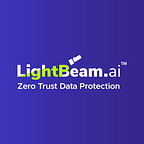How Sensitive Data Discovery Helps Secure PII (Personally Identifiable Information)
Data discovery is the process of locating specific subsets of data from unstructured and structured data sources. It is essential to pinpoint what data lies in business repositories and where.
Data discovery goes hand-in-hand with data classification, which is the process of sorting different types of data based on its sensitivity and vulnerability. Sensitive data discovery and classification are distinct processes in their own right, essential for locating and securing business-critical data.
Sensitive data such as personally identifiable information (PII), payment card information (PCI), and electronic protected health information (ePHI) is always vulnerable to security risks. When sensitive personal data is breached, the consequences can be destructive to businesses. This is why it’s important to know where personal data is stored.
A data discovery and classification tool helps in finding out instances of sensitive data, ownership of the data, and the various data regulations being violated by storing this data in unsecure locations.
Industries that highly require sensitive data discovery
- E-commerce — the ecommerce industry carries a significant burden to protect the sensitive data of online consumers. This almost always includes payment card and consumer behavior information.
- Financial — Commercial banks, credit unions, insurance companies, brokerage firms, accountants, and other financial services institutions deal with heavily regulated information.
- Government — Local, state, and federal government organizations collect and store volumes of information about individuals. Some of this information is a matter of public record, but sensitive data requires specific protection by law.
- Healthcare — Healthcare organizations are responsible for ensuring the privacy and security of patient information. Electronic health information is rigorously protected by GDPR, HIPAA, HITECH and the Omnibus Rule.
- Higher education institutions- Universities, colleges, vocational schools and other higher education institutions collect a wide variety of sensitive data. This could include anything from student PII collected at enrollment to PHI collected at campus health clinics.
- Manufacturing — With the advent of the Internet of Things, devices are collecting greater volumes of data at an unprecedented rate. Manufacturers must ensure that any sensitive data they collect is protected per the law.
- Telecommunications — Companies that collect location information, payment data, voice recordings, and other sensitive data must take the necessary steps to comply with all rules and regulations governing that information.
Benefits of sensitive data discovery
- Locating every instance of sensitive data present in an organization’s data store.
- Facilitating data classification, i.e., categorizing files based on their vulnerability such as, private, confidential, or restricted files.
- Assisting in complying to data regulations like the GDPR, HIPAA, SOX and more.
- Tracking sensitive data that may be exposed or on the verge of a breach due to inadequate security.
- Assisting in fulfilling data access requests made.
- Establishing the basis to develop comprehensive data governance policies.
Challenges of sensitive data discovery
- Data Volume- Today, organizations collect, store, and move more significant amounts of data . The sheer volume of information flowing through an organization makes it a tall order to track, secure, and purge information as required.
- Scattered Data- In recent years, the adoption of cloud computing and remote work has become ubiquitous. Business processes are becoming increasingly interconnected. Content is often spread across different databases, applications, shared files, and other data sources. There are an ever-increasing number of paths that data can travel through and locations where it can end up.
- Unstructured Data- As much as 80% of all data is unstructured , it can’t be easily searched, analyzed or interpreted. This includes web pages, social media posts, images, audio, and video content that don’t fit neatly into a database. Mining these various formats to identify sensitive data embedded within requires advanced analysis.
How to find and identify sensitive data
- Collect — All data, both sensitive and non-sensitive, needs to be found. This is true regardless of storage location or format. The location of all information, both cloud, and on-premise systems should be documented to ensure compliance with regulations.
- Analyze — The next step is to analyze every bit of collected data to determine its sensitivity. This necessitates data mining and analyzing textual information by statistical and linguistic methods that can deal with natural language ambiguities, such as PIIs embedded within long sentences and other difficulties.
- Purge — Any data that has been identified as being unnecessary should be discarded. Policies should be set into place to continuously purge information when it is found to be no longer necessary.
- Secure- Security measures must be put in place to build an effective information protection strategy. Security should be a combination of physical measures (such as locked rooms with controlled entry) and digital measures (such as dynamic encryption and automatic confidentiality assessments).
- Utilize — Once your data has been collected, analyzed, and secured, some of it may be used under privacy laws to gain a competitive advantage. This knowledge can provide valuable insights across your organization. It enables you to serve your customers better, make smarter business decisions, and become more agile in an evolving marketplace.
Sensitive Data Discovery Reduces Risk and Helps Protect PII
When a breach exposes sensitive data, the damage can be considerable and long-lasting. Not just in terms of regulatory fines and lawsuits but also in terms of competitive advantage and revenue loss. The harm to your organization’s reputation can last for years.
As your organization collects information at an unprecedented rate, it’s more crucial to use data discovery tools like Lightbeam’s data discovery tool to assess and manage your entire information protection landscape.
Sensitive data discovery is essential to preventing data loss and staying in compliance. With it, you can develop and implement the necessary security measures to prevent the compromise of sensitive information and safeguard your organization against loss.
